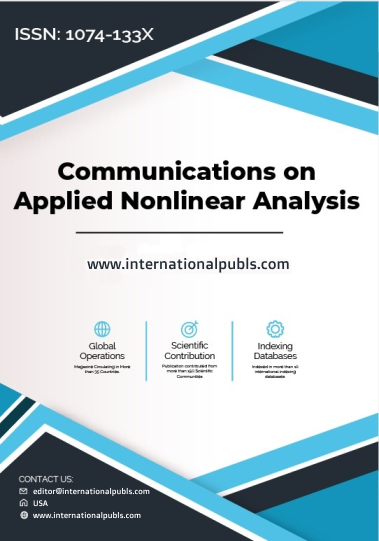Bipartite through Prescribed Median and Antimedian of a Commutative Ring with Respect to an Ideal
Main Article Content
Abstract
Introduction: There are plenty of ways of partners with arithmetical constructions. Some of them to make reference to are bipartite from gatherings, median and anti – median from commutative rings with reference to an ideal. Partnering a median and anti – median of a commutative ring was presented by Beck in 1988. Similarly, Beck has researched the exchange between the ring theoretic properties of a commutative ring and related median and anti – median. Further Anderson and Badawi presented the idea absolute of commutative rings with median and anti – median in the year 2008. The absolute of a commutative ring R is the undirected with R as the vertex set and two particular vertices in R are nearby if and provided that their total is a median and anti – median of R. As of late Anderson and Badawi presented and concentrated on the summed up all out the of commutative rings concerning the multiplicatively prime subset H of R. The summed up complete of a commutative ring is the undirected with all components of R as vertices, and for two unmistakable vertices in R are nearby if and provided that their total is in H.
Objectives: In this article, an endeavour has been made to learn about in hypothetical properties and different control boundaries of summed up absolute of commutative rings of median and anti – median and its supplement.
Methods: Theorem 2.1. For a determinate commutative semigroup S, the set V(φ(Γ(S)))∪{0} is an median of S.
Remark 2.1. A subgraph H of a graph G is a crossing subgraph of G if V(H) = V(G). On the off chance that U is a bunch of edges of a graph G, G \ U is the crossing subgraph of G acquired by erasing the edges in U from E(G). A subset U of the edge set of an associated chart G is an edge set of G if G \ U is separated. An edge set of G is negligible assuming no appropriate subset of U is edge set. Assuming e is an edge of G, with the end goal that G \ {e} is detached, then e is known as an extension. Note that on the off chance that U is an insignificant edge set, G \ U has precisely two associated median parts.
Corollary 2.1. Let T be the minimal edge set of Γ(S), and G1, G2 are two median parts of G \ T. Then the following hold.
(i) For any i = 1, 2, (V(Gi) ∩ V(T)) ∪ {0} is ideal of S provided Gi has at least two vertices.
(ii) V(T) ∪ {0} is an ideal if G_1 or G_2 has only one vertex. A commutative semigroup is called reduced if for any x ∈ S, xn = 0 implies x = 0. The annihilator of x ∈ S is denoted by Ann (x) and it is defined as Ann (x) = {a ∈ S|ax = 0}.
Results: Theorem 2.3. Let S be a commutative ring of median and anti – median. Then the subsequent results hold:
(i) If |Ass (S)| ≥ 3 and ∅ = Ann (x), χ = Ann (y) are two distinct elements of Ass (S), then xy = 0.
(ii) If |Ass (S)| ≥ 3, then girth (Γ(S)) = 4.
(iii) If |Ass (S)| ≥ 6, then Γ(S) is not planar (A graph G is planar if it can be drawn in the plane in
such a way that no two edges meet except at vertex with which they are both incident).
Conclusions: Theorem 2.4. Let S be a commutative semigroup, then the median graph of a bipartite graph is induced by the vertices of maximum degree in G.
Proof. S be a commutative semigroup and G is a bipartite median graph, thus d(v, u) < 2 for any pair of vertices u, v of G. Let the degree of v in G be d. Then, these d vertices are at a distance 1 from v.
So, there are p - 1 - d vertices u in G such that d(v, u) = 2 and D(v) = d + 2(p - 1 - d) = 2(p - 1) - d. Hence the vertices in G such that D(v)is minimum are those for which the degree is maximum. Hence the proof.
Remark 2.3 The median graph of a bipartite graph is also a bipartite graph.
